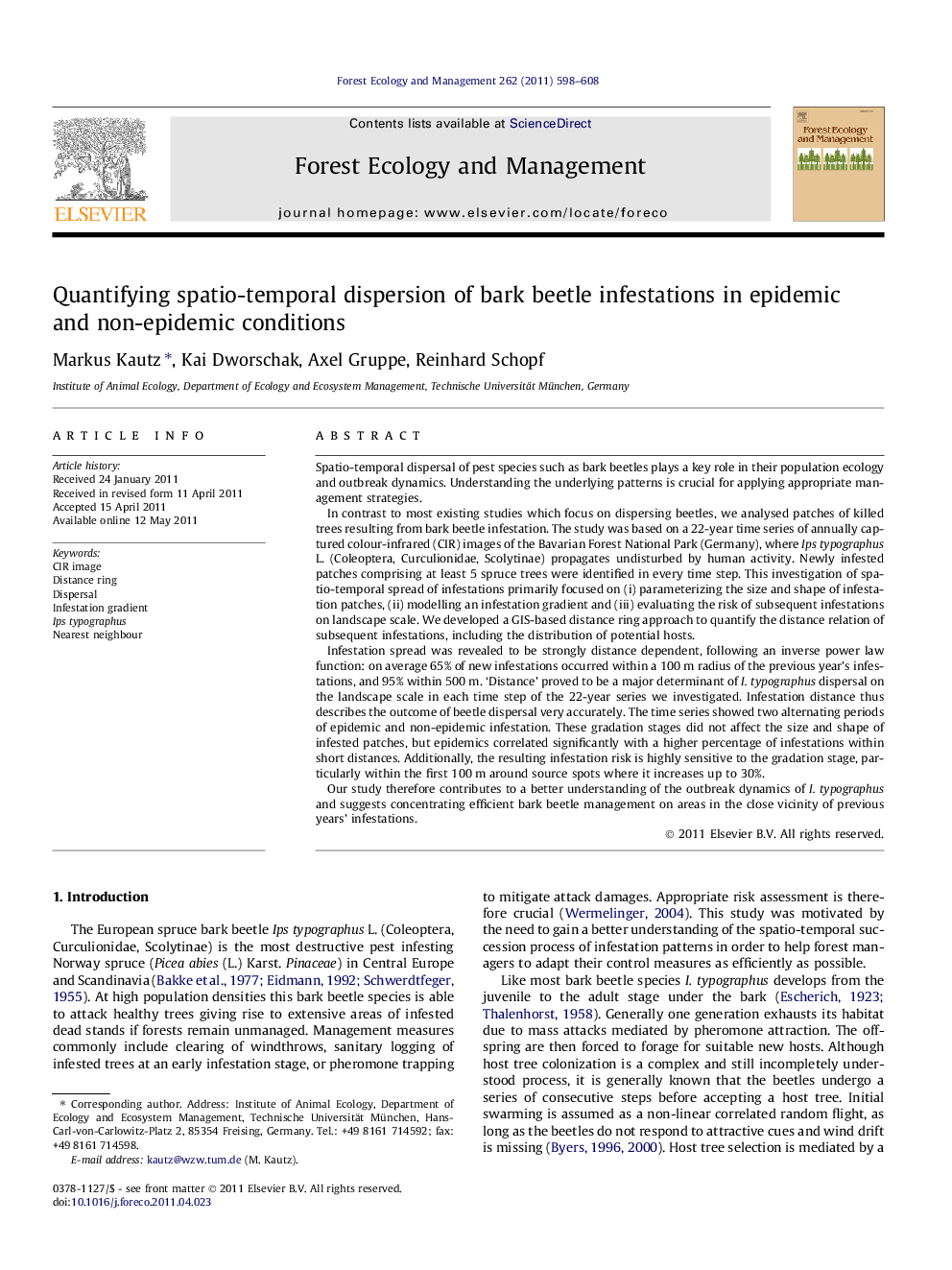| Article ID | Journal | Published Year | Pages | File Type |
|---|---|---|---|---|
| 88178 | Forest Ecology and Management | 2011 | 11 Pages |
Spatio-temporal dispersal of pest species such as bark beetles plays a key role in their population ecology and outbreak dynamics. Understanding the underlying patterns is crucial for applying appropriate management strategies.In contrast to most existing studies which focus on dispersing beetles, we analysed patches of killed trees resulting from bark beetle infestation. The study was based on a 22-year time series of annually captured colour-infrared (CIR) images of the Bavarian Forest National Park (Germany), where Ips typographus L. (Coleoptera, Curculionidae, Scolytinae) propagates undisturbed by human activity. Newly infested patches comprising at least 5 spruce trees were identified in every time step. This investigation of spatio-temporal spread of infestations primarily focused on (i) parameterizing the size and shape of infestation patches, (ii) modelling an infestation gradient and (iii) evaluating the risk of subsequent infestations on landscape scale. We developed a GIS-based distance ring approach to quantify the distance relation of subsequent infestations, including the distribution of potential hosts.Infestation spread was revealed to be strongly distance dependent, following an inverse power law function: on average 65% of new infestations occurred within a 100 m radius of the previous year’s infestations, and 95% within 500 m. ‘Distance’ proved to be a major determinant of I. typographus dispersal on the landscape scale in each time step of the 22-year series we investigated. Infestation distance thus describes the outcome of beetle dispersal very accurately. The time series showed two alternating periods of epidemic and non-epidemic infestation. These gradation stages did not affect the size and shape of infested patches, but epidemics correlated significantly with a higher percentage of infestations within short distances. Additionally, the resulting infestation risk is highly sensitive to the gradation stage, particularly within the first 100 m around source spots where it increases up to 30%.Our study therefore contributes to a better understanding of the outbreak dynamics of I. typographus and suggests concentrating efficient bark beetle management on areas in the close vicinity of previous years’ infestations.
Graphical abstractFigure optionsDownload full-size imageDownload as PowerPoint slideHighlights► The study bases on aerial surveyed spatially extensive data, covering 22 years. ► Subsequent infestations generally follow an inverse power law on a distance gradient. ► Epidemics cause a more leptokurtic distribution compared to non-epidemics. ► Infestation risk correlates with gradation stage (+) and the distance to source (−). ► Gradation stage does not affect size and shape of infestation patches.
